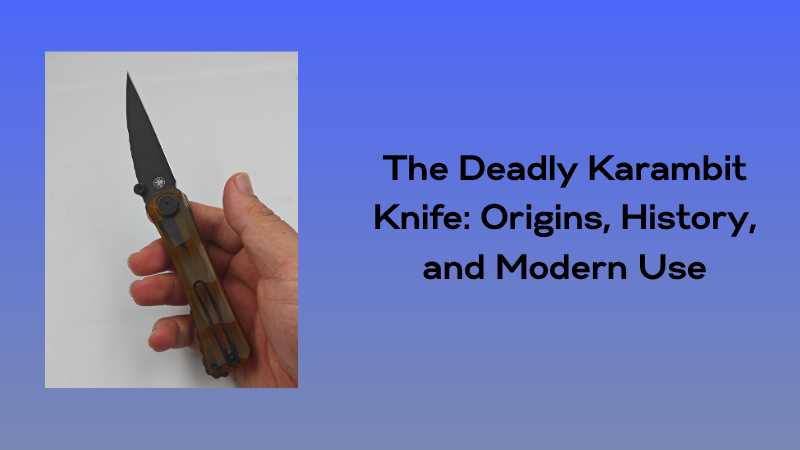
The Deadly Karambit Knife: Origins, History, and Modern Use
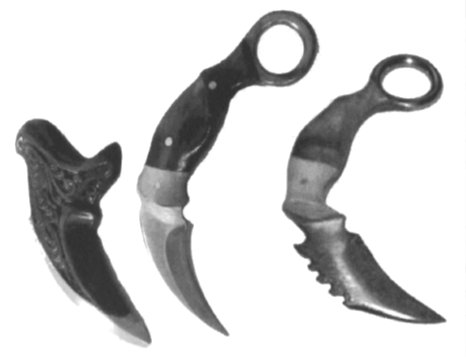
The Deadly Karambit Knife: Origins, History, and Modern Use
The karambit, a small curved hand knife, stands out as one of Southeast Asia’s most distinctive and historically rich weapons. Inspired by the claw of large felines like the tiger, this tool-turned-weapon has evolved over centuries from humble agricultural origins to a renowned martial arts weapon and popular self-defense tool worldwide.
Origins and Historical Background
The karambit’s history traces back over 1,000 years to Indonesia’s West Sumatra province, where the indigenous Minangkabau people first crafted this uniquely curved blade. Known locally as kErambit, its design mirrored the sharp, curved claws of tigers that roamed the region. This connection to the tiger was more than aesthetic; ancient cultures in the area, such as the Sundanese, venerated the tiger’s spirit, believing its claws bestowed special power and protection. Tigers were called pak macan or pamacan, and people even wore necklaces made from real tiger claws as talismans.

Initially, the karambit was not a weapon but an agricultural implement used for tasks like root raking, harvesting, and rice planting—much like the Japanese nunchaku started as a farming tool. Over time, however, its application shifted toward combat and self-defense, especially within local martial arts.
One notable related weapon is the Kuku Macan (“tiger’s claw”), a larger curved blade from Sumatra often coated with deadly poisons derived from frogs, snakes, and spiders. These blades elevated the weapon’s lethality beyond its physical design. The karambit’s signature feature, the finger ring, distinguished it from similar curved knives like the Arab Janbiya or Japanese Kubikiri Tanto, which lacked this element.
Cultural and Martial Integration
Despite its rural origins, the karambit found a respected place within the combat traditions of Southeast Asia. The Bugis warriors of South Sulawesi, Indonesia, incorporated the karambit into their fighting system, Pencak Silat, where the blade’s inward curve and finger ring allowed powerful slicing and stabbing motions, especially when wielded in reverse grip. The Karambit Besar (“large karambit”) evolved with longer and more curved blades for maximum cutting power in battle.
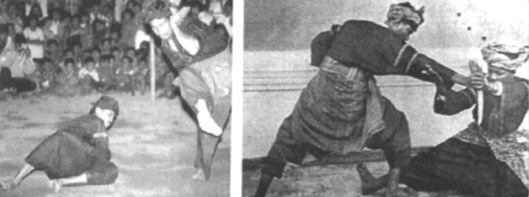
However, the Indonesian military historically regarded the karambit with some disdain, considering it a peasant’s tool rather than a soldier’s weapon. Yet, the blade remained a favored last-resort weapon, akin to the Japanese tanto or wakizashi. Indonesian women also carried karambits discreetly, either in hair or clothing, for personal defense.
With the spread of Southeast Asian martial arts and trade, the karambit’s influence expanded through Malaysia, Thailand, the Philippines, and beyond. In the last 30-40 years, practitioners of Pencak Silat, Filipino martial arts, and other disciplines introduced the weapon to Western audiences, leading to its growing global popularity.
Karambit in Modern Combat and Self-Defense
Today, the karambit is widely recognized not only as a martial arts weapon but also as a practical self-defense tool. Its compact, curved blade and finger ring provide a secure grip, enabling both traditional and modern fighting techniques. Law enforcement and military personnel in various countries have adopted karambits for close-quarters combat due to their agility and defensive utility.
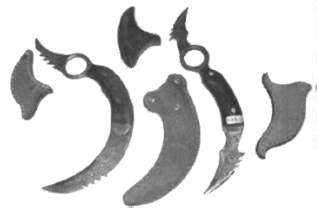
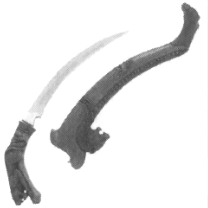
However, the karambit is not a universal tool. Its curved blade requires proper training for safe and effective use, especially since improper handling can lead to self-injury. For everyday users, karambits offer a unique combination of compactness, power, and control unmatched by conventional knives.
Popular Karambit Models and Their Features
Several manufacturers have developed karambits that blend traditional design with modern materials and technology. Here are some of the top karambit knives today:
1. Emerson Tactical Karambit
A pioneer in tactical karambits, Emerson’s 3-inch blade made of 154CPM stainless steel features the patented Emerson Wave opening for rapid deployment. The handle, reinforced with titanium liners and G-10 scales, provides a secure grip with a well-integrated finger ring. The model’s compact size and ergonomic design make it a favorite among tactical users. MSRP: $325.
2. TOPS Knives Demon Claw II
A 3-inch hawkbill blade crafted from 1095 carbon steel with a black coating for corrosion resistance. Its extended handle and finger ring ensure full grip and control. The knife’s design is ideal for personal defense, offering precision cutting capabilities and versatility. MSRP: $165.
3. CRKT Du-Hook
Designed by Austin McGlaun, this fixed blade karambit features a 5.1-inch SK-5 carbon steel blade and G-10 handle. Heavier and larger, it emphasizes durability and tribute to military heritage, suitable for those desiring a robust fixed blade. MSRP: $113.
4. Fox Knives 479
A folding karambit with a 2.95-inch N690Co stainless steel blade hardened to 58-60 HRC. The handle features G-10 scales and an aircraft-grade aluminum ring, balancing lightweight and toughness. Its reversible pocket clip enhances carry convenience. MSRP: $156.
5. Boker Magnum Spike
A full-size fixed blade with a 4-inch 440A stainless steel blade featuring black coating for stealth and rust resistance. The tan G-10 handle offers multiple finger grooves and ergonomic comfort, suitable for users wanting a larger karambit with striking visual appeal. MSRP: $73.
6. Spartan Ronin Shoto
A collaboration by Spartan Blades and Ronin Tactics, this folding karambit sports a rare 2.5-inch tanto blade made from CTS XHP steel, combining durability and sharp cutting edge. The design accommodates tactical use with a smooth opening aided by the Emerson Wave mechanism. MSRP: $155.
7. Lionsteel/Emerson LE One
One of the most advanced folding karambits, featuring a 3.23-inch CPM MagnaCut “super steel” blade. The framelock handle is machined from a single aluminum block, featuring a reversible pocket clip and multiple opening methods. Its lightweight and ergonomic design suit both collectors and practical users. MSRP: $268.
8. Kershaw Outsider
An affordable entry-level karambit with a 2.6-inch 8Cr13MoV stainless steel blade and SpeedSafe assisted opening. The glass-filled nylon handle offers comfort and security. This model balances performance with accessibility for new users. MSRP: $72.
Why Choose a Karambit?
The karambit excels in close-quarters combat due to its curved blade and secure grip, which permit powerful slashing and hooking techniques. Its finger ring prevents accidental drops and allows quick blade deployment, making it favored by martial artists and tactical professionals alike.
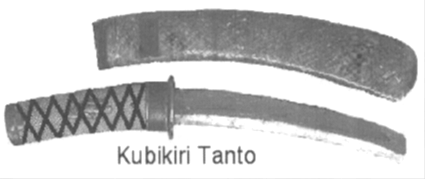
For general outdoor tasks, other knives may serve better, but for self-defense and combat scenarios requiring precision and control, the karambit stands out. However, potential users should seek proper training to maximize effectiveness and safety.
Conclusion
Rooted deeply in Southeast Asian culture and history, the karambit has journeyed from a simple agricultural tool to a globally respected weapon and self-defense instrument. Its unique design inspired by the tiger’s claw combines tradition, functionality, and lethality.
Whether you’re a martial artist, collector, or self-defense enthusiast, the karambit offers unmatched maneuverability and power in a compact form. Today’s modern karambits incorporate advanced materials and manufacturing techniques, honoring the legacy of this ancient weapon while adapting it for contemporary use.
If you’re interested in exploring the world of karambits, consider learning from experienced martial artists and choosing a high-quality model that fits your needs. The karambit isn’t just a knife; it’s a piece of living history, a deadly tool forged by centuries of tradition and innovation.
Shieldon’s Commitment to Karambit Excellence
At Shieldon Knives, we recognize the growing global passion for karambit knives—a weapon steeped in rich tradition yet perfectly suited for modern self-defense and tactical use. That is why we have dedicated ourselves to designing and manufacturing karambit models that combine authentic heritage with cutting-edge craftsmanship and premium materials. Among our standout offerings are the Shieldon Scythe XL (DC01K) and Shieldon REV (DC02A)—both meticulously engineered with 154CM stainless steel blades, known for their exceptional edge retention and corrosion resistance, paired with ergonomic PEI and G10 handles for durability and superior grip.
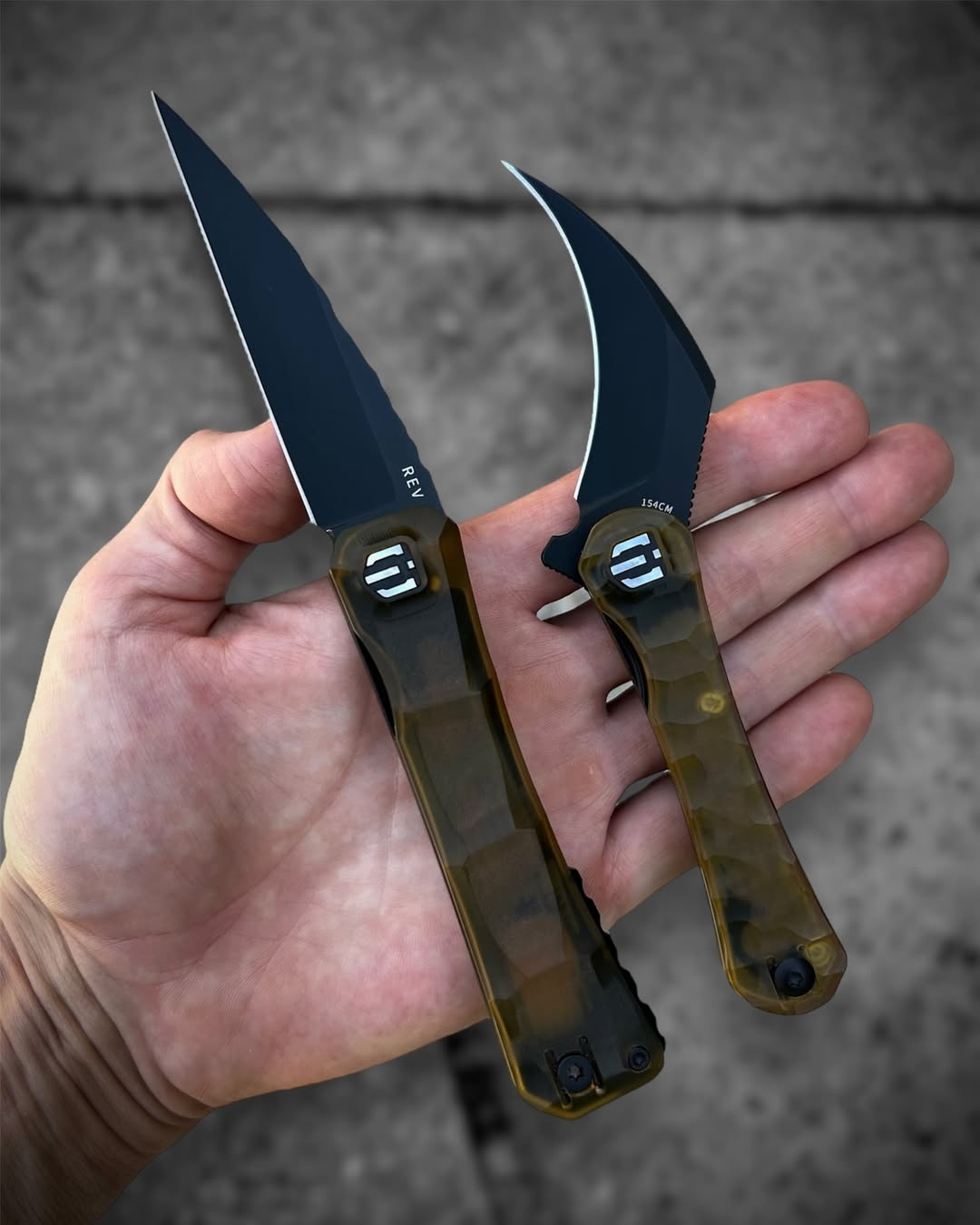
The Scythe XL embodies the classic karambit silhouette with a contemporary twist. Its translucent amber handle and black titanium-coated blade not only provide aesthetic appeal but also ensure tactical advantage and long-lasting performance. Meanwhile, the REV offers slightly longer blade length and an innovative diamond-like carbon coating, enhancing stealth and wear resistance. Both knives feature precision ball-bearing pivots for smooth deployment and reliable nested liner/frame locks for safety during use.
Choosing a karambit from Shieldon means investing in a knife that meets the highest standards of quality control and design excellence. Our collaborations with renowned designers, such as DC Blades and Auxiliary Manufacturing in the USA, guarantee that each model is battle-tested and user-approved. Whether you are a martial arts practitioner, a tactical professional, or a knife enthusiast seeking a reliable self-defense tool, Shieldon provides karambits that blend tradition with innovation.

We invite you to explore our karambit collection on the Shieldon website and experience firsthand the trusted durability, ergonomic comfort, and cutting precision that define our brand. With Shieldon Knives, you are not just buying a knife—you are embracing a legacy of craftsmanship and deadly efficiency. Trust Shieldon to be your partner in protection and performance.
